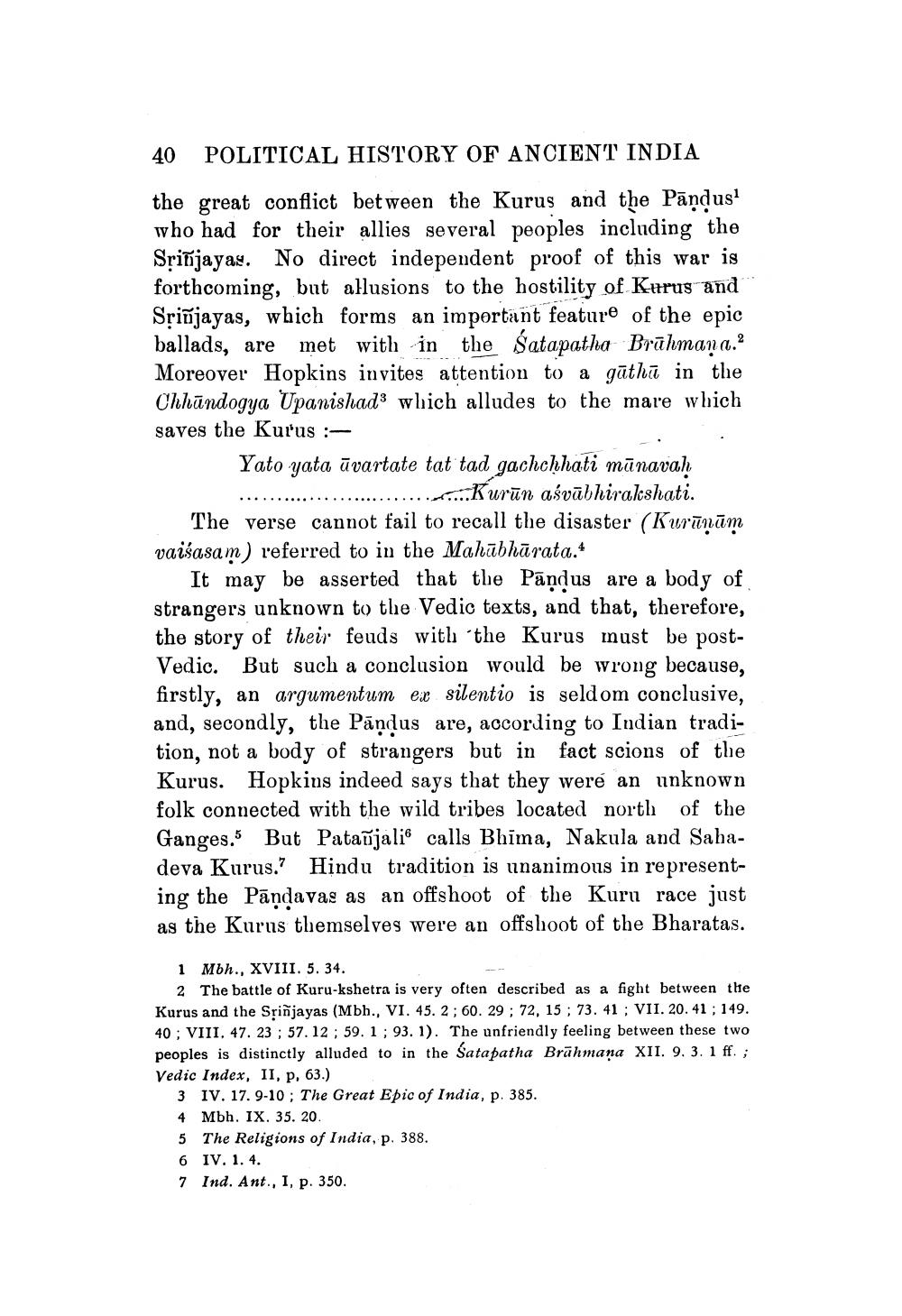________________
40 POLITICAL HISTORY OF ANCIENT INDIA the great conflict between the Kurus and the Pāndus who had for their allies several peoples including the Sșiñjayas. No direct independent proof of this war is forthcoming, but allusions to the hostility of Kurus and Sriñjayas, which forms an important feature of the epic ballads, are met with in the Satapatha Brūhmaṇa.? Moreover Hopkins invites attention to a gūthū in the Chhāndogya Upanishads which alludes to the mare which saves the Kurus :Yato yata ūvartate tat tad gachchhati mūnavah
............... .kurūn aśvābhirakshati. The verse cannot fail to recall the disaster (Kurūņām vaisasam) referred to in the Mahābhārata.
It may be asserted that the Pandus are a body of strangers unknown to the Vedic texts, and that, therefore, the story of their feuds with the Kurus must be postVedic. But such a conclusion would be wrong because, firstly, an argumentum ex silentio is seldom conclusive, and, secondly, the Pāndus are, according to Indian tradition, not a body of strangers but in fact scions of the Kurus. Hopkins indeed says that they were an unknown folk connected with the wild tribes located north of the Ganges. But Patañjalie calls Bhima, Nakula and Sahadeva Kurus. Hindu tradition is unanimous in representing the Pāņdavas as an offshoot of the Kuru race just as the Kurus themselves were an offshoot of the Bharatas.
1 Mbh., XVIII. 5. 34.
2 The battle of Kuru-kshetra is very often described as a fight between the Kurus and the Spiñjayas (Mbh., VI. 45. 2; 60. 29 ; 72, 15 ; 73. 41 ; VII. 20.41; 149. 40; VIII, 47. 23 ; 57.12 ; 59. 1 ; 93. 1). The unfriendly feeling between these two peoples is distinctly alluded to in the Satapatha Brāhmana XII. 9. 3. 1 ff.; Vedic Index, II, p. 63.)
3 IV. 17. 9-10; The Great Epic of India, p. 385. 4 Mbh. IX. 35. 20. 5 The Religions of India, p. 388. 6 IV. 1. 4. 7 Ind. Ant., I, p. 350.




